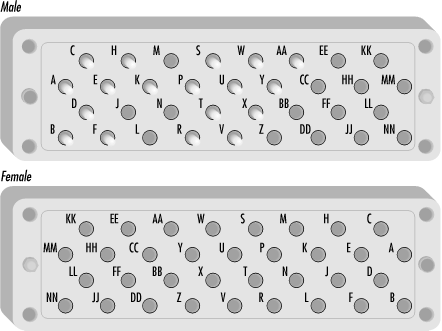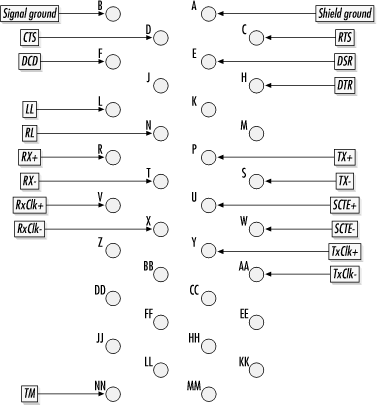High-Speed Serial: V.35
V.35 is an old specification that has been obsolete since 1988. Most “V.35” interfaces are actually V.36, V.37, or V.38 interfaces. V.35 is fairly sparse—it does not even specify the form factor of the interface. ISO 2593 contains the specifications for the blocky, long-pinned Winchester connector. However, the industry refers to such interfaces and cables as V.35, so I will too in order to maintain consistency.
To save space, V.35 uses common-ground transmission on signaling leads, but the data and clock signals use differential signaling. Connectors have 34 possible pins, which are lettered A through NN. (G, I, O, and Q are not used.) When used for data-communications applications, connectors typically only have 17 or 18 pins. To ensure that the cables are inserted correctly, the screw attachment mechanism allows connectors to be attached only one way. Figure E-4 shows male and female V.35 connectors.

Figure E-4. Male and female V.35 connectors
Each pin is given a purpose and is assigned to a particular serial circuit. Figure E-5 shows the circuit assignments by abbreviation. More detail on the circuits is in Table E-2.

Figure E-5. Circuit identifiers
Table E-2. V.35 pin assignments
|
Pin |
V.24 circuit |
Circuit name |
Circuit abbrev. |
Circuit type |
Circuit ... |
|---|
Get T1: A Survival Guide now with the O’Reilly learning platform.
O’Reilly members experience books, live events, courses curated by job role, and more from O’Reilly and nearly 200 top publishers.

